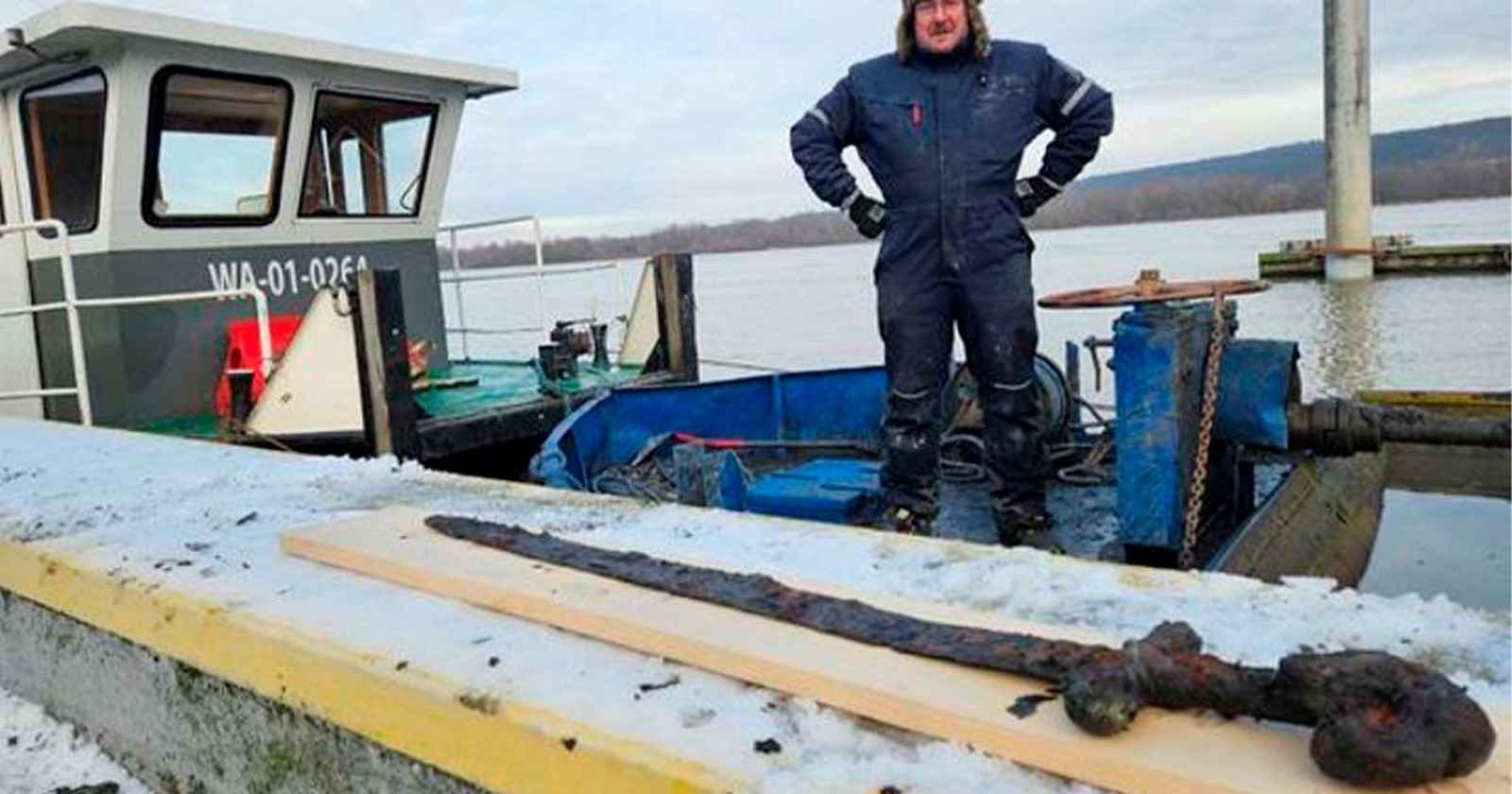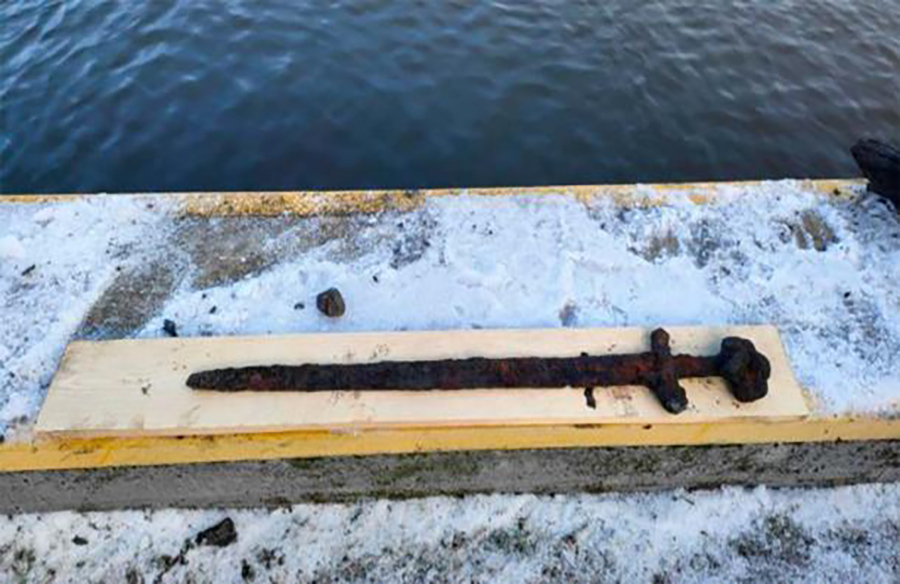Amidst the depths of a river in Poland lies a centuries-old mystery: a sword believed to be around 1,000 years old, potentially with ties to the Vikings. Unearthed from the silt of the Vistula River in Włocławek, this medieval weapon holds clues to Poland’s ancient past, sparking intrigue and debate among historians and archaeologists alike.

Tracing the Sword’s Origins
Consulting archaeologist Olaf Popkiewicz tentatively dated the sword to the 9th century, a period preceding the establishment of the Polish state. Its discovery raises questions about its role in the formation of the House of Piast, the earliest recorded dynasty in Poland. The sword’s symmetrical blade, reminiscent of weapons from northwestern Europe, hints at connections to Scandinavian and Franconian cultures, offering insights into Poland’s evolving identity.
Unveiling the Ulfberht Inscription
A closer examination of the sword revealed a concealed inscription, “U[V]LFBERTH,” reminiscent of the renowned “Ulfberht” marking found on medieval swords across Europe. Sambor Gawiński, representing the Provincial Conservator of Monuments, highlighted the distinct carbon composition of these swords, known for their exceptional strength and durability. While some speculate “Ulfberht” to be a Frankish name, uncertainties persist regarding the swords’ origins and their association with the Vikings.

Debating Historical Context
Despite speculation linking the sword to the Vikings, skepticism has been voiced by experts like Robert Grochowski, who categorizes similar swords as Carolingian rather than Viking. These swords, originating from the Rhine territories, were traded extensively and might have reached Central Europe, including Poland. Grochowski’s insights underscore the need for comprehensive research to accurately place the sword within its historical context.
Continuing Investigations
The sword’s journey doesn’t end with its discovery. Researchers at Nicolaus Copernicus University in Toruń are committed to unraveling its mysteries through meticulous study. Ultimately, the artifact will find its place in history museums, where it will offer a tangible connection to Poland’s rich medieval past.

As debates continue and investigations unfold, the 1,000-year-old sword remains a testament to Poland’s enduring legacy and the intricate tapestry of European history.






















